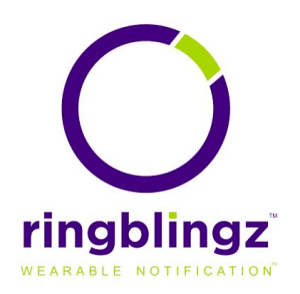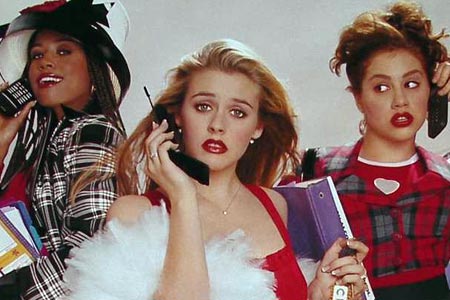The lack of wearable technology created just for teenagers is surprising, especially when you consider how tech-obsessed kids are: the average American teen spends 7.5 hours consuming media, while 70% of 13 to 17 year olds now own a smartphone. A new startup called Ringblingz wants to tap into this potentially lucrative market.
Ringblingz, which will start taking pre-orders in March, is currently part of the connected devices accelerator program launched in December by digital agency R/GA and Techstars.
Its first product, a smart ring that will make its public debut tomorrow at New York Fashion Week, focuses on what’s most important to teens—their social lives—by sending them alerts from favorite contacts on different social media channels so they don’t have to constantly check their phones. Photos won’t be available until the ring is unveiled, but head of marketing Jeanniey Mullen gave me a sneak peek. It looks like a signet ring and has an O-shaped diffused light on top that flashes different colors.
The first Ringblingz is aimed at teen girls and the most avid consumers will probably be high schoolers aged 15 to 17, says Mullen. The device taps into two lucrative markets: teens in the U.S. spend a total of about $208 billion each year on things for themselves, while the wearable tech market hit $8 billion last year.
From Jibbitz to Ringblingz
The startup boasts a team with an interesting pedigree. Co-founder Rich Schmelzer launched Jibbitz, a line of decorative charms for Crocs footwear, with his wife Sheri from their Colorado basement in 2005.
If you don’t like Crocs and were mystified by their phenomenal success in the early 2000s, you are probably wondering why anybody would want to start a business dedicated to making the foam clogs look even more outrageous. But Jibbitz proved to be extremely popular and was acquired by Crocs for $10 million in 2006. Since then, the Schmelzers have also launched GeoPalz, which makes activity trackers for kids.
Mullen says Schmelzer’s background in kids’ accessories and wearable tech has been key to Ringblingz’s development. The founding team’s collective experience also includes Mullen’s stint as CMO of Zinio, one of the first newsstand apps; Alexandra O’Leary’s position as COO of GeoPalz; and Bill Phelps’ time as a product manager at EB Brands, which develops and licenses wearable tech to companies like Reebok.
 RingBlingz has a good chance of grabbing the attention of teenagers for several reasons. First, a ring is more affordable (Ringblingz will retail for about $40 to $60) and less obtrusive than a wristband. Its alerts lets users watch for social media updates, texts, and calls from their best friends, crushes, parents, and other important people without having to keep their smartphone out.
RingBlingz has a good chance of grabbing the attention of teenagers for several reasons. First, a ring is more affordable (Ringblingz will retail for about $40 to $60) and less obtrusive than a wristband. Its alerts lets users watch for social media updates, texts, and calls from their best friends, crushes, parents, and other important people without having to keep their smartphone out.
This may seem frivolous, but less time spent fiddling with their mobiles every single time they get a push notification means teens can turn their attention to friends, studying, or not accidentally walking into things.
Ringblingz is also customizable, which Mullen says was a key point in focus groups because teens want to coordinate all their accessories with their outfits instead of wearing the same black band every day. The first ring is targeted at girls, but Mullen says there are styles planned especially for boys.
How it works
Ringblingz, which uses Bluetooth LE and connects to an iOS or Android app (a Windows Phone version is in the works), has to be within 100 feet of its paired smartphone to work and alerts teens when they move too far away. This will probably be a major selling point for parents who fret about kids losing expensive devices (maybe Ringblingz will also figure out a way to pair retainers).
Notifications on wearable devices are especially tricky. For example, when the Pebble smartwatch first launched, its constant stream of vibrating alerts for emails, texts, and calls was dubbed “a great way to be constantly irritated by technology.”
Since teens send a median of 60 texts each day, the Ringblingz team knew they had to make sure its app offers plenty of room for customization, with different light colors and patterns for each contact and social channel. Alerts can also be set for group conversations and the ring can be put into vibrate mode for class.
The ring’s non-rechargeable battery lasts three to six months and free replacements will be provided by the company. Mullen says the startup is looking at other sources of power, such as inductive charging, that will work with the device’s small size.
Ringblingz can serve as an introduction to wearable tech for kids–a novelty that is useful for them, but doesn’t have so many functions or such a high price tag that it puts off parents. The startup, which is currently looking for seed investment, plans to develop new devices for Ringblingz’s users as they enter their early twenties, as well as different consumer demographics.
“Ringblingz is meant to be a full line of products that will expand over time. We have considered a number of factors, like the engagement level of kids who have the ring, as they move into adulthood, and adding features like two-way communication,” says Mullen. “The potential is endless.”
